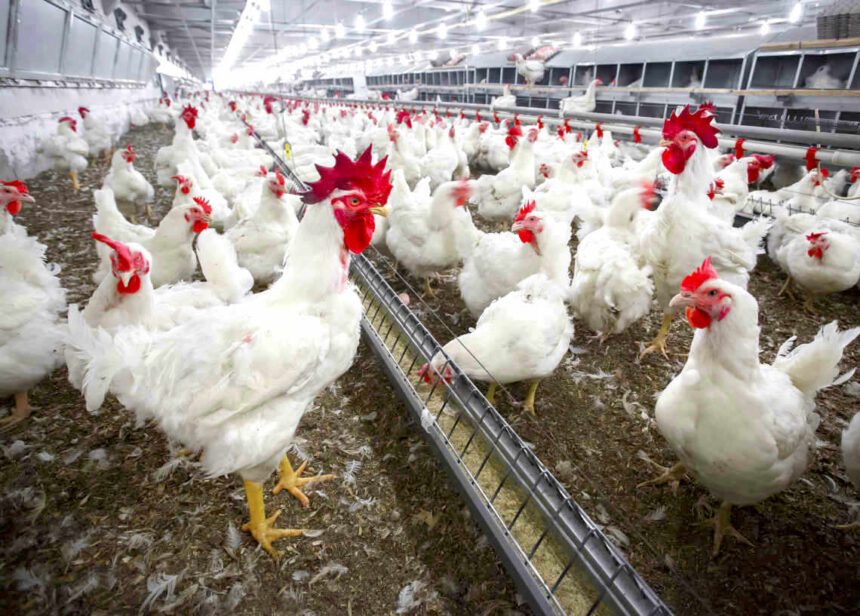Establishing a successful and profitable poultry enterprise relies mainly on three crucial components.
These include the type and quality of feed provided to the birds, the production system used to rear the birds, as well as the housing that accommodates the birds over the prescribed production cycle.
When intending to set up a successful poultry production enterprise, continuous attention must be placed on these three fundamentals, which are the subject of this article.
Firstly, feed is an essential component that a farmer must understand and apply correctly for chickens to achieve optimal growth and performance.
For instance, when intending to rear dual-purpose chickens, such as Rhode Islands, Boschveld, Khoekhoek, Sussex and Sasso, it is important to remember that these birds require water, carbohydrates, proteins, vitamins, fibre and minerals to meet their daily nutritional needs.
It is, therefore, essential to feed the birds a ration that contains these nutrients in adequate amounts.
Moreover, it is vital to feed each bird (chicken) an average of 130 grams (g) of feed daily.
A farmer can use kitchen and garden remains to feed the birds.
However, commercially, the birds can be fed with poultry mix or grain mix, which supply carbohydrates and protein.
Additionally, farmers can incorporate water-soluble supplements, such as Opti-Boost or Aviboost, to supply the birds with essential vitamins and minerals.
As for layers, day-old chicks should be fed with Pullet or Chick Starter from day one to six weeks.
From six weeks, the chickens can be fed with Pullet or Chick Grower until they are 16 weeks old, after which the hens can be introduced to layer mash with access to about 110g of feed daily.
Broilers can be fed with commercial feeds on a phase feed basis.
From day one to 14 days, they can be fed Broiler Starter (in a mash form).
At 15-37 days, the chickens can be introduced to Broiler Grower.
Finally, in the last five days (day 38-42 weeks), the chickens can be introduced to Broiler Finisher.
Apart from feed, it is essential to remember that the way the birds (chickens) are reared has a direct impact on their productivity.
Farmers who aim to achieve profitability are encouraged to rear chickens in a semi-intensive production system when raising dual-purpose chickens.
This system allows the chickens freedom of movement and exposure to a variety of feed sources, which, in turn, help to improve the flavour and texture of the meat they produce.
As for broilers and layers, it is essential to adhere to an intensive production system, as it enhances the productivity of birds.
An intensive production system ensures that a farmer’s birds are protected against weather elements (rain, wind, heat and cold) and predators, thus reducing the risk of diseases, theft and mortality.
An intensive production system also ensures that a strict health programme that prevents diseases (using vaccines, antibiotics and supplements) is followed.
Ultimately, when the birds are comfortable and provided with sufficient feed and water, their productivity levels tend to peak.
Housing is the last but most crucial factor that has a direct influence on the success of a poultry enterprise.
When building a chicken house, it is advisable to construct it at about 2.2 metres in height, while the length and width of the house depend on the stocking density of the chickens.
Moreover, when building a placement house that is ideal for day-old chicks, it is important to remember that each placement house must be equipped with infrared heating bulbs that will be used to supply warmth to the chicks.
These bulbs should hang with a string that can be easily adjusted to regulate temperature.
Additionally, the recommended stocking density is about 20-55 chicks per m2.
In the production house, the recommended stocking density is about 10-12 chickens per m2, and each m2 must be equipped with a drinker and a feeder to ensure that the chickens have unlimited access to food and water.
Furthermore, when building the coops, it is advisable to make use of chicken wire mesh that restricts the entrance of snakes, rodents and other unwanted animals.
Overall, paying attention to these three fundamental factors can directly influence the success and profitability of a farmer’s poultry enterprise.
*Hanks Saisai is Agribank’s technical advisor on crops and poultry.


